From employee engagement to thriving: Five ways to make your employees succeed
today2022.07.20. 5197 9 5


Farai Mugabe, Content & Research, The HR Congress
WHY SHOULD YOU CARE?
There is a new employee who emerged from the pandemic—an employee with a new set of expectations. For companies to become great places that can attract and retain the right talent, they should reset their culture, employee experience, and leadership approach.
In the past, Microsoft focused on employee engagement surveys that showed its staff was highly engaged. However, despite having high employee engagement scores, they still noticed that employees were struggling as they were going through survey responses. They realized that they needed to shift towards employee thriving rather than engagement. Microsoft wanted to see its employees thriving and winning rather than just being “energized and empowered to do meaningful work.”1
The global COVID-19 pandemic brought a radical shift in employee experience and culture, often referred to as the Great Resignation.2 Employees had time to reflect and rethink the “why of work,” which brought a total shift in how we view employee experience.3 The new environment requires listening leadership, especially because 65% percent of employees indicate that the pandemic has shifted their thinking towards work.4 5 Given that employee expectations are changing, companies need to reshape employee engagement towards employee thriving.
Thriving in business and an unhappy workforce
Business leaders across the whole industry are worried about employee productivity, staff turnover, culture, wage pressure, profit margins, and sales. They want companies to perform better.4 For companies to perform better, employees should be more productive, engaged, and committed to working goals.3 On the other hand, employees are leaving workplaces and have become more apathetic than ever before. There is a new employee who emerged from the pandemic—an employee who has had time to reflect on what life means.4 For companies to become great places that can attract and retain the right talent, they should reset their culture, employee experience, and leadership approach.
Why employee engagement matters?
Employee engagement is a state of showing a high drive of commitment and motivation by employees to achieve excellent results that will help a company perform to its truest potential.6 Engaged employees show a high drive of commitment and motivation by employees to achieve excellent results that will help a company to perform to its truest potential.7
From Engagement to Employee thriving
Microsoft defined employee thriving as being “energized and empowered to do meaningful work.” Employee thriving goes a long way in ensuring that employees are not only engaged but thriving, and to thrive is to be successful. Companies that focus on employee thriving desire to see their employees win in every aspect of the organization. As a result, employees become more engaged and interested in achieving set goals and objectives.4
When you focus on employee thriving, the objective becomes to win rather than just being committed to goals. The idea is to install a winning mentality and remove key stumbling blocks towards the path to victory. This implies a total shift in how employee surveys are designed and administered.
How Microsoft is reimagined employee engagement
- Employees were struggling despite high employee engagement scores
Employee engagement data from Microsoft indicated high employee engagement scores. The People Analytics team had a closer look at the responses and realized that employees were struggling. Dawn Klinghoffer and Elizabeth McCune from Microsoft said, “…while employees scored “I feel included in my team” highly at 86, by far the most common thread among those who were not thriving was a feeling of exclusion—from a lack of collaboration to feeling left out of decisions to struggling with politics and bureaucracy.” This clearly indicated that despite having a high employee engagement score, there was a need to reimagine employee engagement.1
- Culture matters
Employees who were thriving and others who were not viewed culture differently at Microsoft. Thriving employees talked about teamwork, collaboration, and an inclusive culture. They also indicated that the culture was dominated by autonomy and flexibility. On the other hand, employees who were not thriving indicated that the culture was bureaucratic and lacked collaboration, and they were experiencing siloes. These were employees working in the same organization but having different employee experiences.
Having given an account of how Microsoft shifted from employee engagement to employee thriving, we have done some analysis to determine what could have influenced this change in approach.1
- People data and insights
Microsoft used data to make decisions. Data-driven approach to HR decision-making that involves the use of the foundation of verifiable data for making decisions.9 HR now makes decisions based on the use of statistical data analysis and technology on issues related to Human Resources practices. This has an array of benefits, such as making solid decisions based on empirical evidence. A decision based on a solid data foundation will help HR teams clearly understand key employee engagement and thriving insights.10
- Employees are worried about a stressful world
The world has become more stressful than ever. Employees face tough challenges such as burnout, stress from social pressures such as the war in Ukraine, a rising cost of living, and job cuts. Employees have these challenges, which cause them to be highly distracted at work. Employees may be committed to work and life goals and yet be struggling and stressed. 65% of employees indicate that the pandemic has shifted their thinking towards work. Such pressures and distractions result in employees struggling despite being committed to goals.5
- Changing employee expectations
A new world with a new set of expectations emerged due to COVID-19 and other associated changes.3 Research by Gartner indicates that the pandemic has resulted in 65% of employees shifting their attitude toward the value of aspects outside work. 62% of employees say the pandemic has made them long for a bigger picture of their lives. 65% say that the pandemic has made them rethink the place that work should have in their lives. This shift in employee expectations has led to leadership refocusing their thinking on how they manage people.5
- A rise in employee apathy
There has been a high level of growing employee apathy across the world. The psychological contract has changed. Employees have been exposed to trauma due to COVID-19 and a generally uncertain environment. In environments that are war-threatened, employees are not sure if they can make it to the next day alive. This has shifted employees’ mindsets to increased concern about themselves and how they can make it to the next day. As a result, while employees might display elements of commitment to work goals and energy, they may be struggling. Microsoft had to shift towards a focus on seeing its employees thriving rather than just being engaged.11
Employee thriving has a strong focus on growth and continuous learning.
- Reframing employee surveys
An employee engagement question is phrased as follows: “My manager cares and supports me in my goals.” An employee thriving question can be rephrased to: “My manager wants to see me successful in my goals.” 12 It’s the same question but has a different impact and focus. The second question goes a long way in focusing on success. Microsoft reframed its employee engagement surveys to focus on the 5 “P”s, which are “Pay, Perks, People, Pride, and Purpose.” To exemplify this, companies need to rethink employee engagement and focus on what makes their employees more likely to succeed.13
- Employee recognition
Employees strive when they feel loved and recognized for their efforts. Recognition is “the act of praising gratitude to employees for who they are and what they do. It involves praising employees, giving them credit for good ideas, and acknowledging their accomplishments. ”14 Research has shown that 40% of employees indicate they receive recognition only a few times a year or less from a supervisor or manager. As per research, creating a culture of recognition can save a 10,000- employee company $16.1 million in turnover costs annually.15
- Focus on caring leadership
Leadership should be caring to employees who are facing several key challenges to deal with current challenges employees are facing. Employees now expect human-centered leadership as they face a stressful world. Employees leave bad leaders and stay because of good ones.16 For employees to be motivated to strive, leaders should show that they care and empower their employees to realize their full potential.17
- Work flexibility
Flexible work arrangements refer to an arrangement between an employer and an employee that alters the traditional way of working to accommodate an employee’s outside work commitments better.18 A Harvard Business Review Survey mentioned in a Work Human article indicates that “59% of respondents reported that flexibility is more important than salary or benefits. 77% of the respondents said that they prefer to work for a company that gives them the flexibility to work from anywhere rather than fancy corporate headquarters.”19
Employee engagement and employee thriving might sound the same, but to Microsoft, the two are different. Employee thriving goes a long way in creating an environment where employees are winning. If you think employee engagement is not helping your business, then you should probably try employee thriving. On 25 August 2022, the HR Congress will be hosting an employee experience webinar. Event speakers will include Niamh Graham, the Vice President of Global HR and Workhuman. Thomas Papp, a partner of the HR Congress, will moderate the discussions.
…
1 Why Microsoft Measures Employee Thriving, Not Engagement, by Dawn Klinghoffer and Elizabeth McCune
https://hbr.org/2022/06/why-microsoft-measures-employee-thriving-not-engagement
2How Companies Can Use Technology to Enhance Culture in the Age of the Great Resignation, by Nirit Peled-Muntz, HR Congress
3EMPLOYEE EXPERIENCE: Reimagining EX to build a thriving workplace, by Thomas Papp, HR Congress
4LEADERSHIP – What successful leaders do to foster employee connection and spur innovation, by Mihaly Nagy, HR Congress
5Employees Seek Personal Value and Purpose at Work, by Jack Wiles, Gartner
6Employee engagement in the new world of work, by Farai Mugabe, HR Congress
https://hr-congress.com/2022/03/25/employee-engagement-in-the-new-world-of-work/
7New Gallup Research on How to Design Recognition Programs That Drive Business Impact, by Sarah Mulcahy, Work Human
8What is employee engagement and how do you improve it?, by Gallup,
https://www.gallup.com/workplace/285674/improve-employee-engagement-workplace.aspx
9Global Business Driven HR Transformation: The Journey Continues, Jason Geller and Arthur Mazor
10How people analytics makes HR a winner, by Farai Mugabe, HR Congress
https://hr-congress.com/2022/05/13/how-people-analytics-makes-hr-a-winner/
11The pandemic has taught us to be closer to our people: Five key predictions for 2022
128 Key takeaways: How CAA increased employee engagement and improved work culture, by Aaron Kinne, Work Human
13The 5Ps of Employee Fulfilment, Kathleen Hogan, Microsoft
https://www.linkedin.com/pulse/5ps-employee-fulfillment-kathleen-hogan
14New Gallup Research on How to Design Recognition programs that drive business Impact, by Sarah Mulcahy, Work Human
15The Human-Centered Leader, by Lynee Levy, WorkHuman
https://www.workhuman.com/resources/globoforce-blog/the-human-centered-leader
17Back to basics: What is employee empowerement?, Mike Lovett, WorkHuman
https://www.workhuman.com/resources/globoforce-blog/back-to-basics-what-is-employee-empowerment
18Flexible Work, by Workplace Gender Equality Agency, Australian Government
https://www.wgea.gov.au/flexible-work
19Why most companies aren’t ready for a 4- day work, by Jason Lauristen, Work Human
Written by: Mihaly Nagy
Employee Engagement Employee Experience Future of Work HR Strategy
Previous post

- 4894
- 6
labelArticles today2022.07.08.
Resetting your employer brand to enhance employee experience in times of the Great Reflection
Farai Mugabe, Content & Research, The HR Congress WHY SHOULD YOU CARE?The pandemic has made employees rethink the place that work should have in their lives and they have changed [...]
Similar posts

labelArticles today2024.07.24.
AI-Powered HR: Strategic Benefits and Practical Applications

labelArticles today2024.06.24.








Post comments (0)